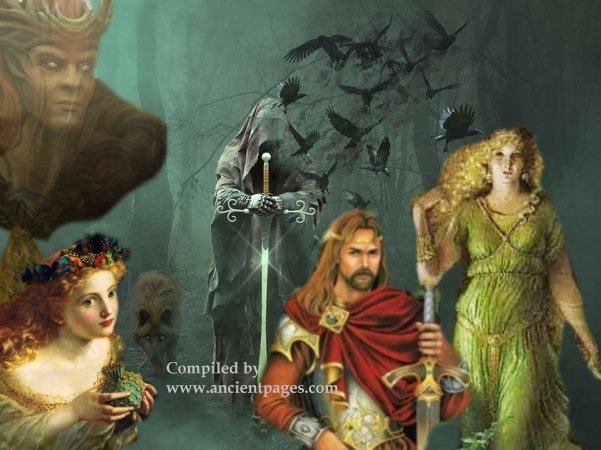Celtic Valhalla And Sacred Wells – Magic Of Invisible Worlds
Ellen Lloyd - AncientPages.com - The boundary between what we define as reality and the invisible world is thin. To ancient Celts, hidden realms were just as significant as the physical world our naked eye can perceive. Glimpses of these unseen worlds could occasionally be spotted but only by the enlightened ones.
Adobe Stock - Teodor Lazarev - conceptcafe - Compilation: AncientPages.com
Like most ancient cultures, Water was sacred to ancient Celts, and so was nature.
"People have observed the Water and its powers over the centuries and created myths and legends about it. Water has been credited with purification and healing effects.
In many cultures, ponds, pools, and especially springs were believed to be abodes for water sprites, nymphs, or dangerous, prophetic demons." 1
From early Celtic literature, we learn the importance of magic and the supernatural that sculpted the destinies of many Celtic heroes and gods, along with curses, shapeshifting, and prophecies.
Fairies Preventing Access To Sacred Water
Ancient Celts worshipped Water in all forms and made votive offerings by throwing sacred objects such as jewelry and weapons into rivers and lakes.
Springs and wells were sacred as the Celts believed their Water held magical properties and could heal almost anything. Wells were often guarded by fairies who occasionally could prevent magical water access.
One example of such an event comes from King Conary Mor's legend cycle, a story beautifully narrated in T.W. Rolleston's book Celtic Myths and Legends.
"The preliminary events of the cycle are transacted in the "Land of Youth," the mystic country of the People of Dana after their dispossession by the Children of Miled." 2
Tir na n'Og, the Land of Youth, also known as the Land of the Forever Young, is a realm of the afterlife and one of the Happy Islands, known mainly from Celtic and Irish legends.
"It was the 'Land of the Forever Young,' often identified as an underground realm or a mysterious land beneath the sea. The inhabitants of this magical place would remain forever young and happy. Nobody wanted food or drink, and illness, ugliness, and death did not have access to Tir na n'Og. As on other Happy Islands also on Tír na nÓg, the time flows slower than in the land of mortals." 3
St Oran's Well, Oranmore, County Galway, Ireland. Credit: Sheila1988 - CC BY-SA 4.0
The legend tells that when the dying King Conary Mor, who is very thirsty "is perishing of thirst, asks mac Cecht to procure him a drink, and mac Cecht turns to Conall and asks him whether he will get the drink for the king or stay to protect him while mac Cecht does it.
"Leave the defense of the king to us," says Conall, "and go thou to seek the drink, for of thee it is demanded." Mac Cecht then, taking Conary's golden cup, rushes forth, bursting through the surrounding host, and goes to seek for Water. Then Conall, and Cormac of Ulster, and the other champions, issue forth in turn, slaying multitudes of the enemy; some return wounded and weary to the little band in the Hostel, while others cut their way through the ring of foes. Conall, Sencha, and Duftach stand by Conary till the end; but mac Cecht is long in returning, Conary perishes of thirst, and the three heroes then fight their way out and escape, "wounded, broken, and maimed."
Meantime mac Cecht has rushed over Ireland in a frantic search for the Water. He tries the Well of Kesair in Wicklow in vain; he goes to the great rivers, Shannon and Slayney, Bann and Barrow—they all hide away at his approach; the lakes deny him also; at last he finds a lake, Loch Gara in Roscommon, which failed to hide itself in time, and thereat he fills his cup.
But the Fairy Folk, who is here manifestly elemental powers controlling the forces of nature, have sealed all the sources against him.
In the morning, he returned to the Hostel with the precious and hard-won draught but found the defenders all dead o,r fled, and two of the reavers in the act of striking off the head of Conary. Mac Cecht struck off the head of one of them and hurled a vast pillar stone after the other, who was escaping with Conary's head. The reaver fell dead on the spot, and mac Cecht, taking up his master's head, poured the Water into its mouth.
Thereupon the head spoke, and praised and thanked him for the deed." 2
As Iain Zaczek explained in the book Chronicles of the Celts, "wells also had associations with the Otherworld and, in Celtic tradition, they often possessed some magical properties linked to ritual activity. In many cases, this occurred after the severed head of an important person had been deposited into the well. The coming of Christianity did little to affect the high status of these sacred sites." 4
A Journey To The Celtic Valhalla
Many descriptions of the mysterious Celtic Otherworld are known under various names. As previously explained on AncientPages.com, some stories say, "If you look through the Irish mist, you might catch a glimpse of the enigmatic Celtic Otherworld. Some ancient legends tell this beautiful place, shrouded in mystery, co-exists next to our reality, like a parallel invisible world.
Other myths and legends say the Celtic Otherworld is hidden underground and can be reached by entering ancient burial mounds.
The location of the Celtic Otherworld is unknown. Still, it is home to the Tuatha Dé Danann, the people of the Goddess Danu, a supernatural race of God-like beings who invaded and ruled Ireland thousands of years ago." 5
In Wales, the Otherworld "was usually called Annwn, the kingdom featured in the story about Pwyll. Here the place does not seem too menacing, but in The Spoils of Annwn" – an episode of The Book Taliesin – it proved deadly. Arthur's quest to retrieve a magical cauldron of plenty cost the lives of most of his men. Equally dangerous were the Hounds of Annwn, spectral dogs that flew through the air at night, presaging death or disaster.
In Irish lore, the Otherworld took on more varied forms and was often associated with the Celtic belief in the afterlife. It was Tir na Nog, the Land of the Ever-youthful in its most idyllic state. Oisin came with his lover, Niamh, and stayed for three hundred years. The otherworld Hostels or Bruidheim were almost as pleasurable. These resembled a kind of Celtic Valhalla where the emphasis was on feasting, revelry, music, and lovemaking." 4
When described this way, the vision of the Celtic Otherworld strongly reminds us of Valhalla, the Viking warriors' dream destination.
Many ancient Celtic beliefs had metaphysical aspects that we have only started exploring in recent years.
Written by - Ellen Lloyd – AncientPages.com
Updated on December 3, 2023
Copyright © AncientPages.com All rights reserved. This material may not be published, broadcast, rewritten or redistributed in whole or part without the express written permission of AncientPages.com
Expand for references- Sutherland - Power Of Water In Beliefs Of Ancient Cultures - AncientPages.com
- W. Rolleston – Celtic Myths and Legends
- Sutherland - Tír na nÓg – Mythical Land Where Time Floats Slower Than In Mortal Lands, AncientPages.com
- Iain Zaczek – Chronicles of the Celts
- Ellen Lloyd - Elusive Celtic Otherworld Where Tuatha Dé Danann Reside And Time Passes Slower, AncientPages.com
More From Ancient Pages
-
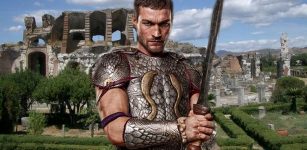 Perfectly Preserved Roman Tombs Discovered Near City Of Capua Where Spartacus Trained As Gladiator
Archaeology | Jan 7, 2021
Perfectly Preserved Roman Tombs Discovered Near City Of Capua Where Spartacus Trained As Gladiator
Archaeology | Jan 7, 2021 -
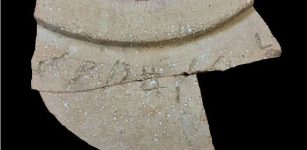 Puzzling Sabaean Inscription Found On A Large Clay Jar Near The Jerusalem Temple Deciphered
Archaeology | Apr 4, 2023
Puzzling Sabaean Inscription Found On A Large Clay Jar Near The Jerusalem Temple Deciphered
Archaeology | Apr 4, 2023 -
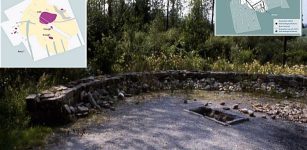 Burnt Mound Complex Dated To Bronze Age – Uncovered At Suffolk Site
Archaeology | Jun 19, 2023
Burnt Mound Complex Dated To Bronze Age – Uncovered At Suffolk Site
Archaeology | Jun 19, 2023 -
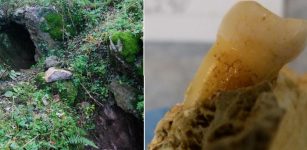 Bacteria Found In 4,000-Year-Old Human Molars Found In Cave – Responsible For Tooth Decay And Gum Disease – New Study
Archaeology | Mar 30, 2024
Bacteria Found In 4,000-Year-Old Human Molars Found In Cave – Responsible For Tooth Decay And Gum Disease – New Study
Archaeology | Mar 30, 2024 -
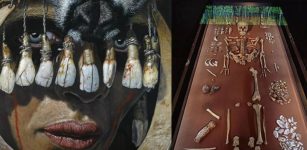 DNA Study Sheds New Light On The Mysterious 9,000-Year-Old Shaman Burial In Bad Dürrenberg
Archaeology | Nov 29, 2023
DNA Study Sheds New Light On The Mysterious 9,000-Year-Old Shaman Burial In Bad Dürrenberg
Archaeology | Nov 29, 2023 -
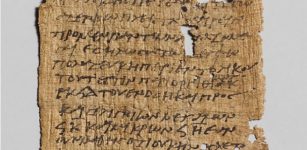 Papyri Was Still In Use After The Arab Invasion In Egypt
Archaeology | Jul 14, 2020
Papyri Was Still In Use After The Arab Invasion In Egypt
Archaeology | Jul 14, 2020 -
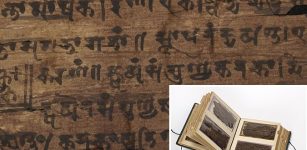 Ancient Indian Text Re-Writes History Of Number Zero And Mathematics
Archaeology | Sep 15, 2017
Ancient Indian Text Re-Writes History Of Number Zero And Mathematics
Archaeology | Sep 15, 2017 -
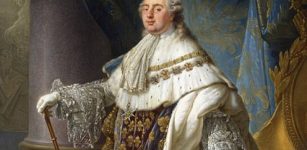 On This Day In History: King Louis XVI Of France Was Put On Trial For Treason – On Dec 11, 1792
News | Dec 11, 2016
On This Day In History: King Louis XVI Of France Was Put On Trial For Treason – On Dec 11, 1792
News | Dec 11, 2016 -
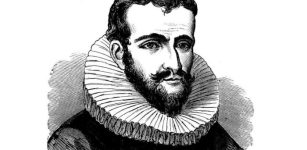 On This Day In History: Crew Of Discovery Launches Mutiny Against Captain Henry Hudson – On June 22, 1611
News | Jun 22, 2016
On This Day In History: Crew Of Discovery Launches Mutiny Against Captain Henry Hudson – On June 22, 1611
News | Jun 22, 2016 -
 3,000-Year-Old Wooden Structure Found In Hittite Tunnel Mentioned On Cuneiform Tablets
Archaeology | Sep 2, 2023
3,000-Year-Old Wooden Structure Found In Hittite Tunnel Mentioned On Cuneiform Tablets
Archaeology | Sep 2, 2023 -
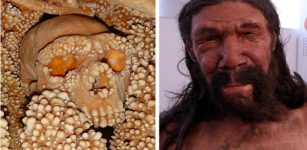 Fascinating Altamura Man – One Of The Most Complete Neanderthal Skeletons Ever Discovered
Featured Stories | Jul 15, 2022
Fascinating Altamura Man – One Of The Most Complete Neanderthal Skeletons Ever Discovered
Featured Stories | Jul 15, 2022 -
 Legendary Sea Monster Exists: Icelandic Government Commission Says
Featured Stories | Sep 27, 2014
Legendary Sea Monster Exists: Icelandic Government Commission Says
Featured Stories | Sep 27, 2014 -
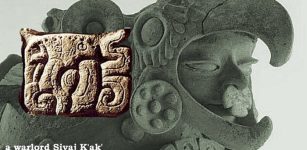 On This Day In History: Powerful Warlord And Emissary Of Spear-Thrower-Owl Arrived At Tikal – On Jan 8, 378 AD
News | Jan 8, 2017
On This Day In History: Powerful Warlord And Emissary Of Spear-Thrower-Owl Arrived At Tikal – On Jan 8, 378 AD
News | Jan 8, 2017 -
 On This Day In History: Great Fire Of Rome Recorded – On July 18, 64 AD
News | Jul 18, 2016
On This Day In History: Great Fire Of Rome Recorded – On July 18, 64 AD
News | Jul 18, 2016 -
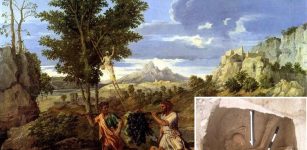 Mysterious Biblical Canaanites – What Ancient DNA Reveals About Their Fate
Archaeology | Jul 28, 2017
Mysterious Biblical Canaanites – What Ancient DNA Reveals About Their Fate
Archaeology | Jul 28, 2017 -
 19 Cannons Shot From British Ships During The American Revolution Discovered In Savannah River
Archaeology | Apr 29, 2022
19 Cannons Shot From British Ships During The American Revolution Discovered In Savannah River
Archaeology | Apr 29, 2022 -
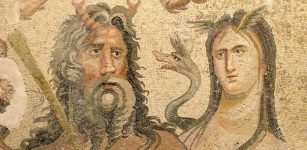 Wonderful Ancient Mosaics In Ancient City Of Zeugma, Turkey
Archaeology | Dec 12, 2015
Wonderful Ancient Mosaics In Ancient City Of Zeugma, Turkey
Archaeology | Dec 12, 2015 -
 Incredible Ancient Star Map Depicting Our Galaxy Is Hidden In Africa
Featured Stories | Aug 4, 2018
Incredible Ancient Star Map Depicting Our Galaxy Is Hidden In Africa
Featured Stories | Aug 4, 2018 -
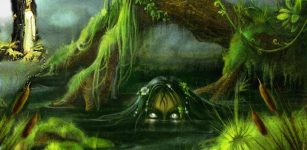 Evil Spirits And Demons Of Marshes And Swamps In Slavic Folklore
Featured Stories | Nov 16, 2016
Evil Spirits And Demons Of Marshes And Swamps In Slavic Folklore
Featured Stories | Nov 16, 2016 -
 Intriguing Study Reveals Genes And Languages Aren’t Always Found Together – What Does This Say About Our Ancestors?
Archaeology | Nov 22, 2022
Intriguing Study Reveals Genes And Languages Aren’t Always Found Together – What Does This Say About Our Ancestors?
Archaeology | Nov 22, 2022



